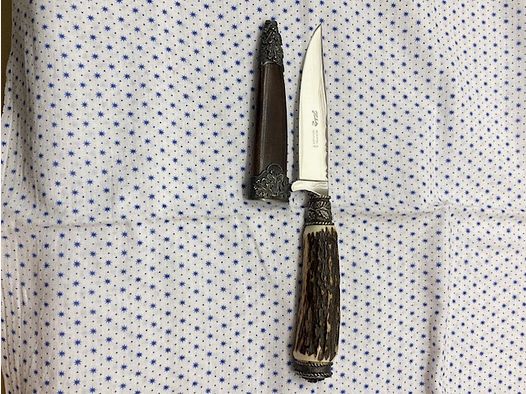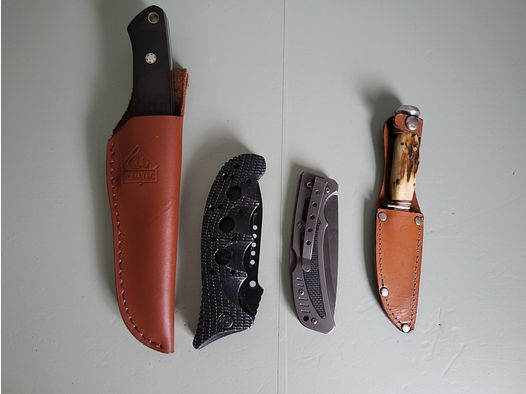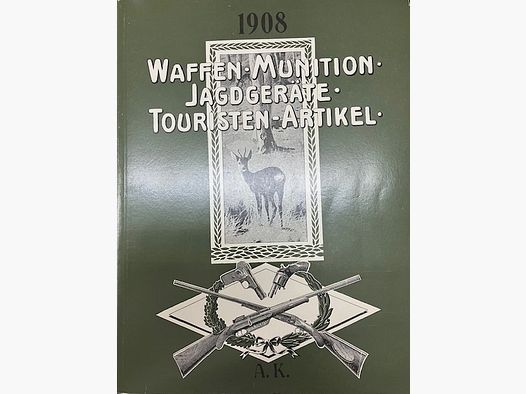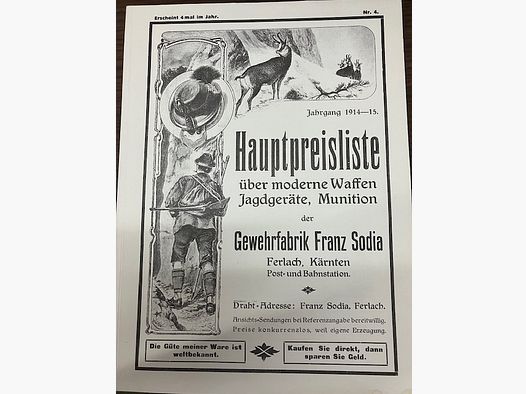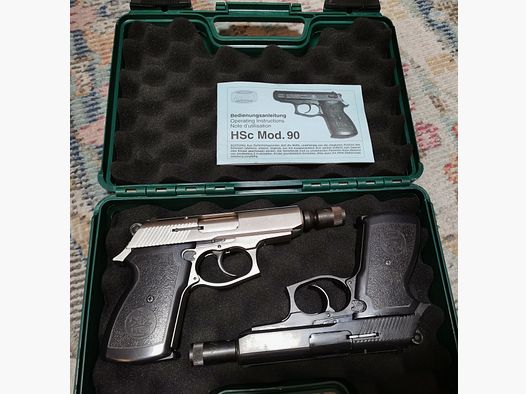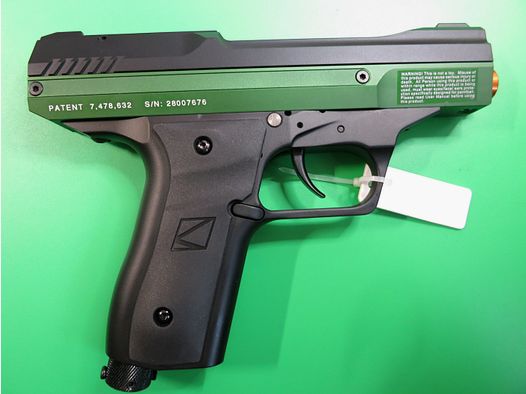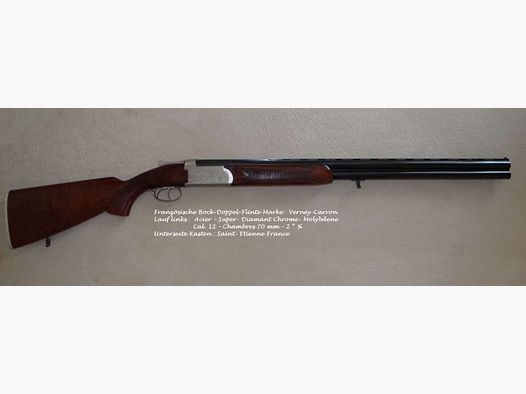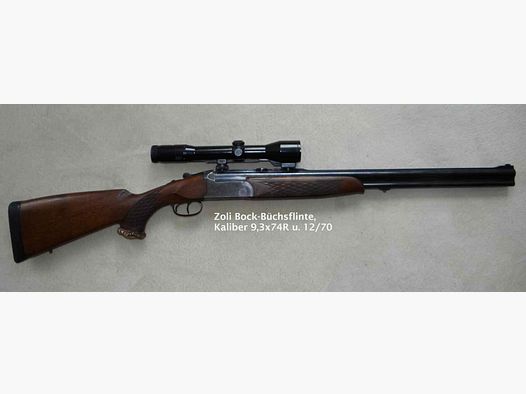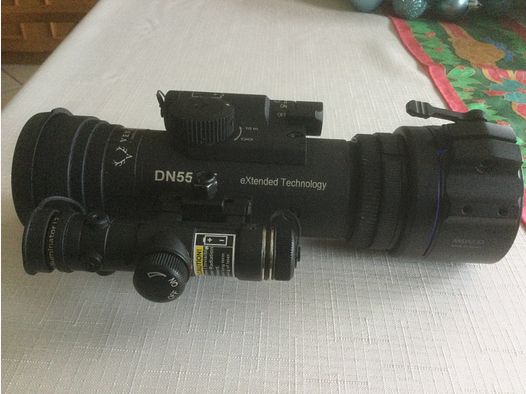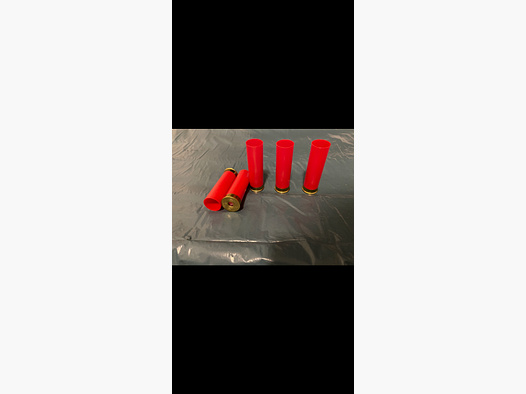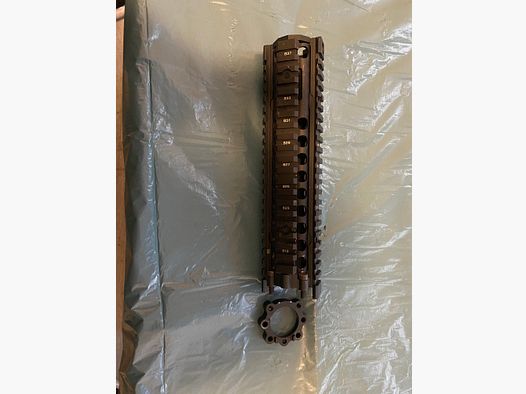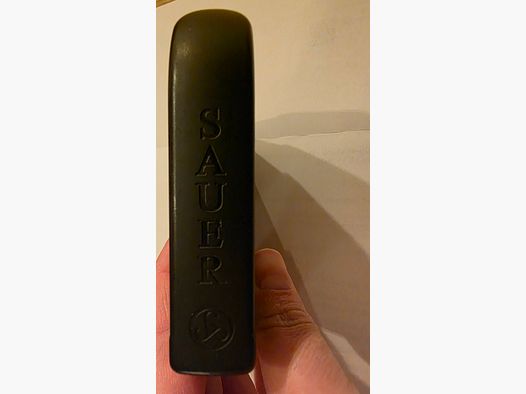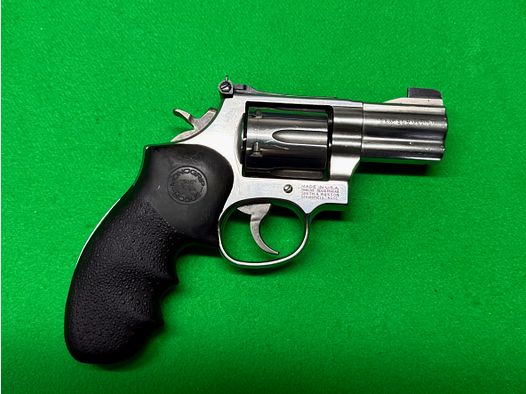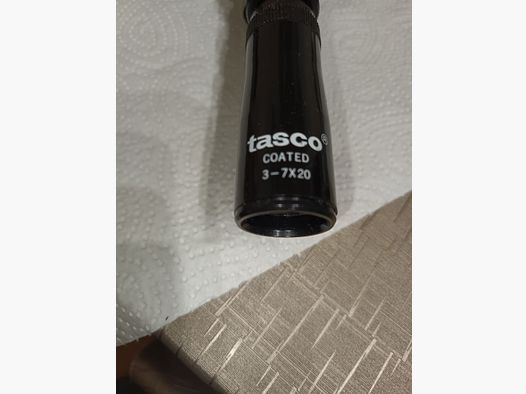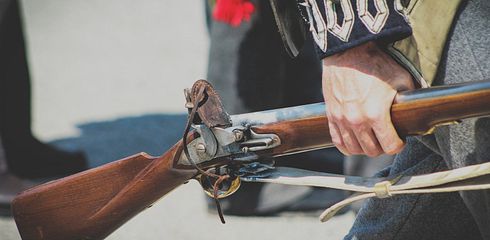The possession of many different weapons is legally restricted or completely prohibited. Below is an overview for dealers as well as users and operators of trading platforms.
(Warning: the list is not exhaustive! Information without guarantee!)
War Weapons
War weapons include all weapons that fall under the War Weapons Control Act.
Fully Automatic Firearms
Most fully automatic firearms are war weapons and are therefore actually included in the prohibition of war weapons. However, to ensure completeness, it is explicitly pointed out again in the law.
Prohibited Pump Action Shotguns
Pump action shotguns, known as "pump guns," are prohibited if
- there is a handgun grip instead of a shoulder stock or
- the overall length of the weapon in its shortest usable form is less than 95 cm or
- the barrel length is less than 45 cm.
Concealed Weapons
"Concealed weapons" means weapons disguised as other objects. This prohibited group of items includes both firearms and bladed weapons. For example, pistols disguised as pens, phones, or flashlights are included, as well as daggers or sabers disguised as combs, which are camouflaged as walking sticks or umbrellas.
Collapsible Weapons, Poacher's Rifle
Weapons that can be further disassembled, folded, pushed together, or shortened beyond what is customary for hunting or sporting purposes. The distinction between such a "poacher's weapon" and a permitted disassemblable weapon (take-down rifle) is extremely laborious in practice - a decision must be made on a case-by-case basis by the relevant specialist department of the LKA or BKA. Important indications of whether a simply disassemblable weapon is a prohibited item:
- The disassemblable parts can be accommodated in the stock, which is correspondingly hollowed out for this purpose.
- A manually operated locking nut with knurling for securing the stock is a fairly reliable indication.
- In older weapons, a muzzle thread for a silencer may indicate that the rifle is a prohibited item. Silencers were uncommon in hunting until recently.
Multi-Shot Handguns (Caliber under 6.3 mm)
Multi-shot handguns manufactured after January 1, 1970, whose caliber is less than 6.3 mm and whose propulsion is not solely provided by the primer.
Steel Rods
Steel rods are striking weapons. Unlike clubs, sticks, or pipes, they are flexible, for example, due to a spring element. Steel rods can often be pushed together. Typically, they are weighted at the end, for example, with a metal head. Rigid telescopic batons do not belong to steel rods; their possession is not prohibited, but they may not be carried in public. The flexibility of steel rods is their essential element, as it enhances the striking effect.
Clubs
Clubs are flexible objects such as rubber hoses, straps, and ropes, where the end is weighted with metal or equally hard and heavy material. The flexibility of the material enhances the striking effect.
Brass Knuckles
A brass knuckle protects the hand when striking with a fist. This allows for strikes with more force, as the risk of injury to the hand is reduced. Additionally, brass knuckles are harder than hands - the blows are significantly harder.
Gloves filled with quartz sand, often referred to as "sand gloves," do not fall under the prohibited items but have been classified by the Federal Court of Justice as dangerous tools within the meaning of §224 StGB. The use of quartz sand gloves can thus be assessed as dangerous bodily harm.
Also, modified everyday objects that fulfill the function of a brass knuckle and are intended to be used as such fall under the prohibition.
Throwing Stars
Throwing stars have been prohibited in Germany since 2003. This includes both throwing stars with sharpened blades and unsharpened specimens. Throwing stars are primarily known for their prevalence in pop culture and are often referred to as "ninja stars."
Molotov Cocktail
A Molotov cocktail refers to various incendiary devices intended for throwing. Throwing at individuals is legally classified as attempted homicide.
Irritant Spray Devices without Marking
Irritant spray devices are devices that spray irritant gas or pepper spray. An irritant device contains a spray can as a charge, making it loadable. A spray can with pepper spray is therefore not an irritant spray device. Irritant spray devices are subject to prohibition if they lack the official test mark from the Physikalisch Technische Bundesanstalt.
Precision Slingshots
Precision slingshots are stone slingshots where precision is determined by an arm support and possibly a sighting aid. Even if an arm support is not attached, the possibility of attaching one to the slingshot is sufficient to categorize it as a precision slingshot.
Choking Objects
A choking object, also known as "nunchaku" or "strangling wood," can be used in various ways for attack (striking, pinching, choking, strangling) and is a prohibited item in Germany. It typically consists of two equally long (about 30 cm) wooden sticks connected by a chain (about 15 cm long). Even "soft nunchakus" designed for training purposes, consisting of plastic tubes covered with foam and connected by a cord, fall under the prohibition, as do all other variants.
Folding Knives
In folding knives, the blade hidden in the handle falls out due to gravity or a throwing motion and then locks.
Spring Knives
In spring knives, the blade hidden in the handle is accelerated and locked by releasing a spring. The prohibition of spring knives does not apply to those that open sideways, whose blades are not double-edged and protrude no more than 85 mm from the handle. Nevertheless, these knives are classified as weapons, and their possession is only permitted from the age of 18. Carrying permitted spring knives in public is an administrative offense.
Fist Knives
A fist knife is a knife where the blade is attached at a 90° angle to the handle. The handle is therefore positioned horizontally in the palm of the hand, while the blade emerges either between the middle and ring finger or the middle and index finger. This design allows for very small and compact knives. Fist knives enable particularly precise and energy-saving cutting from the wrist and are therefore very popular among hunters and similar professions, formerly also among furriers, for skinning, dressing, and butchering. Due to the grip position, especially in combination with a dagger blade, a powerful thrusting motion is possible, which justifies the prohibition.
Butterfly Knives
A butterfly knife is also known as a balisong and is a folding knife with two-part, pivoting handles. The term balisong comes from Tagalog and is a combination of the two words balí ("to break") and sungay ("horn"). The balisong originates from the Philippines and, according to legend, was a working knife for fishermen. Due to the characteristic flipping of the knife, it is used by criminals, like the spring knife, for intimidation during robberies.
Prohibited Ammunition
Armor-Piercing Bullets
Armor-piercing bullets are prohibited for civilian possession.
Bullets with Tranquilizers
Bullets with tranquilizers fall under the prohibition if they are intended for attack or defense purposes.
Bullets or Cartridge Ammunition with Irritants
This ammunition is also prohibited if it is intended for attack or defense purposes and lacks an official test mark.
Cartridge Ammunition with Driving Mirror Bullets
Driving mirror ammunition is cartridge ammunition for firearms with rifled barrels, whose bullets are smaller in diameter than the field diameter of the corresponding firearms and are surrounded by a driving and guiding sleeve that separates from the bullet after leaving the barrel. The original purpose of driving mirrors: The bullet is supposed to become much faster than the usual ammunition of its caliber. However, the prohibition is based on the fact that the bullets of driving mirror ammunition do not show barrel markings and therefore can no longer be assigned to the respective barrel. The prohibition is limited to ammunition for rifled barrels.
Cartridge Ammunition with Other Bullets
- Tracer Bullets
- Explosive Bullets (Pyrotechnic ammunition intended for signaling)
- Incendiary Bullets
- Armor-Piercing Bullets
- Ammunition intended exclusively for use in war weapons.
Small Shot Ammunition
Only "grenaille" ammunition, which can be fired from approved blank-firing weapons.
Irritant Spray Can without Approval Mark
With an approval mark from the BKA, carrying without a weapon permit is allowed. Only cans with CS and CM gas are subject to these regulations; pepper spray is not.
Items for Causing Injury
This refers to items designed to cause injury using a form of energy other than mechanical energy. This includes, for example, electroshock devices, also known as "stun guns," unless they bear the corresponding marking from the Physikalisch Technische Bundesanstalt. This is primarily needed to attest to their health safety. Distance electroshock devices like "Tasers," which transmit the electric impulse through shootable electrodes or a conductive liquid jet, are also prohibited.




